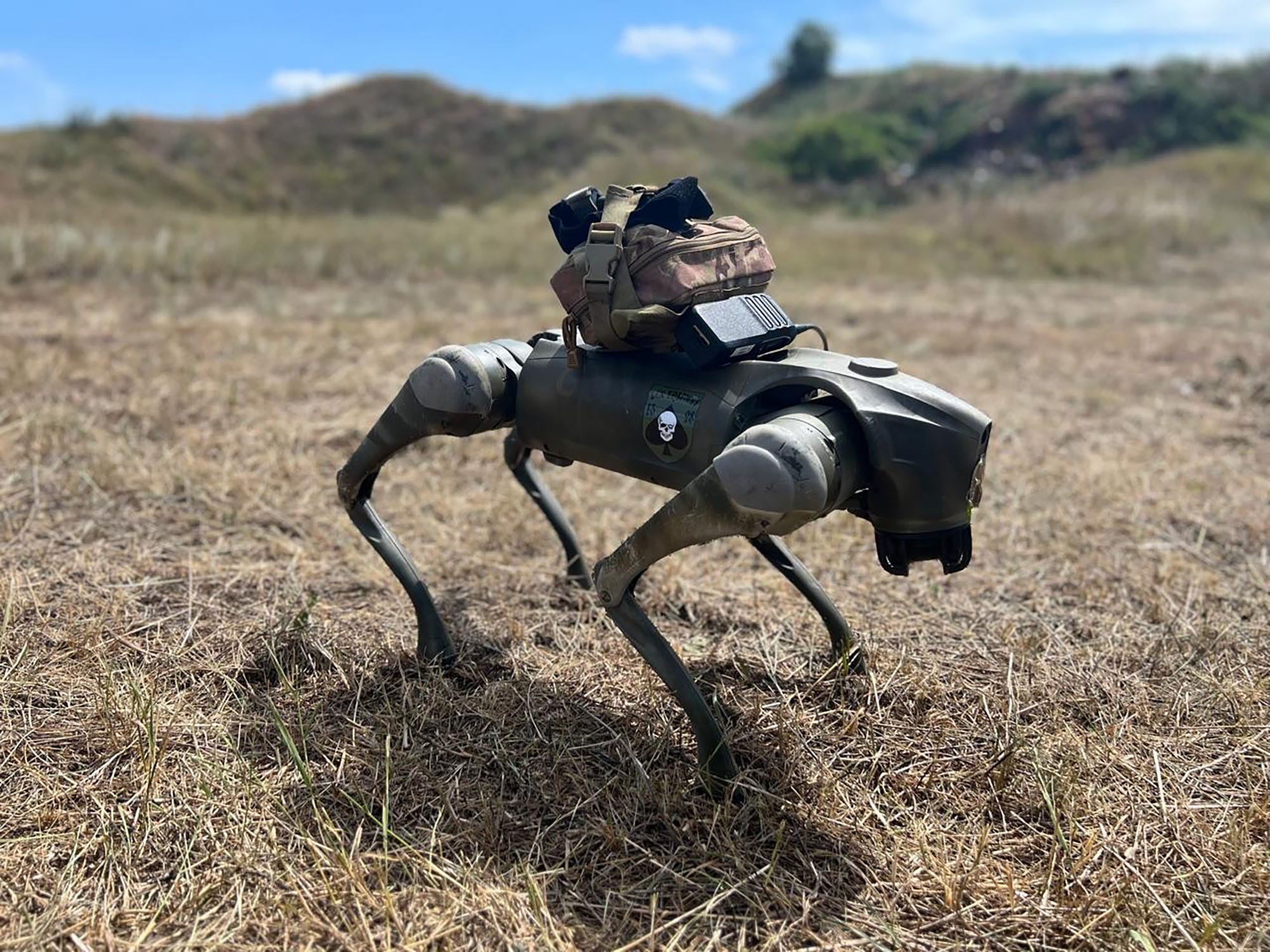The two women lifted a stiff corpse from the ground, revealing a squirming bug in the dirt.
“That one is a live larva!” said Alex Smith, the lab manager of Colorado Mesa University’s Forensic Investigation Research Station, plucking the larva off the ground and stuffing it into a glass tube. Maggots aren’t just maggots, Mr. Smith explained — they’re potential evidence.
“You can actually test the larvae and pupa casings for drugs,” he said, excitedly.
His audience was a group of Mexican medical examiners who last month traveled to the Colorado facility, known as a “body farm,” where dozens of donated dead bodies are laid out in the sun to be studied as they decompose.
The Mexican forensic specialists came to learn about testing cadavers for fentanyl, which is how they wound up in a field of corpses, observing as a researcher foraged in the dirt for maggots.
Their trip had been organized by the U.S. State Department, where officials hoped it would help achieve a key diplomatic goal: getting Mexico’s government to contend with its own fentanyl problem.
In northern Mexico, aid groups and rehabilitation centers have sounded the alarm about a rise in fentanyl use in recent years, reporting a wave of opioid overdoses along parts of the border with the United States. The Mexican government says the drug’s spread is contained, and that overall consumption remains relatively low.
In reality, no one knows exactly how common fentanyl use is in Mexico. There is little recent data on drug abuse at a national level and most Mexican forensic pathologists are not systematically testing dead bodies for fentanyl, medical examiners and U.S. officials say.
“In Mexico, you don’t see cases of fentanyl overdose, not because people aren’t dying of fentanyl, but because we aren’t testing them,” said Dr. César González Vaca, the chief medical examiner of Baja California state, adding: “We don’t look for it.”
Mexico is the dominant source of the illicit fentanyl trafficked into the United States, according to the U.S. government, and while the Mexican armed forces reported a substantial increase in drug seizures last year, synthetic opioids continue to flood across the border.
One strategy for getting Mexico to do more to curb the flow, U.S. officials say, is to demonstrate that fentanyl isn’t just an American addiction — it’s killing Mexicans, too.
The trip to Colorado “was an effort to help Mexico recognize that it has a problem, no matter how inconvenient it may be,” said Alex Thurn, an official at the bureau of international narcotics and law enforcement affairs at the U.S. Embassy in Mexico.
So, on a brisk February morning, more than a dozen forensic examiners and chemists from northern Mexican states piled into the Denver Office of the Medical Examiner to watch the autopsy of a middle-aged man found dead on his garage floor.
The night of his death, he told his on-again, off-again girlfriend that he had taken “10 blues,” likely referring to fentanyl pills, the pathologists said.
Ian Puffenberger, a forensic pathologist, squeezed the man’s lungs and a stream of foam came spilling out. This, Dr. Puffenberger said, was “a common finding” in opioid deaths, as a person’s breathing slows and their lungs fill with fluid.
Sawing into his skull revealed another sign of overdose: the bumps on his brain, known as gyri, looked less bumpy than they should.
“If there’s swelling of the brain,” another effect of opioid overdose, Dr. Puffenberger said, “those gyri push up against the skull and flatten out.”
Beyond their top-of-the-line knives and gleaming facilities — the subject of some chatter among the Mexican coroners — the American pathologists also had an array of expensive tools available to confirm that the man had died of an overdose.
They did preliminary blood tests in a Randox Laboratories machine that costs more than $30,000, which turned up positive results for fentanyl, methamphetamine and amphetamines. Then they sent samples off for a full toxicology screening at a drug-testing laboratory in Pennsylvania.
“We felt like we were in Disneyland,” Dr. Vaca said. “They have everything.”
Mexican medical examiners, Dr. Vaca said, often prop up necks with two-liter bottles of soda and cut skulls with saws normally used to tear through metal. They often earn very little, he said, to assess cause of death in a country where criminals specialize in making their victims unrecognizable.
“Here, they don’t see people chopped up, put in bags, burned, with 200 bullet wounds,” Dr. Vaca said.
The chief medical examiner is a lesson in just how much you can do with less.
After watching fentanyl become a mass killer in the United States, Dr. Vaca began pushing to test bodies in Baja California. He has had to resort to a low-tech method — dipping fentanyl strips in urine, blood or other bodily fluids — and is only testing in Tijuana and Mexicali, the state’s two biggest cities. But the results are stunning.
Since June 2022, more than half of all the bodies that came into the city morgues tested positive for drugs, and fentanyl showed up in 20 percent of them. “It’s a public health emergency,” Dr. Vaca said.
For decades, the voracious American appetite for narcotics fueled the rise of vast criminal networks in Mexico, yet drugs were not historically consumed on a large scale in the country. But drug use is becoming more common, research shows.
The last time the Mexican government conducted its national drug survey, in 2016, the number of Mexicans who said they used illegal narcotics had nearly doubled from 2008. Demand for drug treatment in Mexico has grown rapidly since 2018, according to a separate government study.
Fentanyl has been found in counterfeit pills at sold at pharmacies in northern Mexico as well as in party drugs like cocaine and M.D.M.A. at a music festival near Mexico City.
“It’s cheap to make and simple to distribute,” said Manuel López Santacruz, a medical examiner for Sonora state, across the border from Arizona. Fentanyl pills, he said, cost as little as $3 each, making it affordable for almost anyone to feed their addiction.
The government recently restarted the national drug use survey, after a yearslong hiatus, but experts say it’s unlikely to capture the true spread of synthetic opioids, because many users may not admit to taking them.
Tracking fentanyl deaths would more reliably reflect the problem’s scale, experts say, but requires significant investment by the authorities.
In Denver, the chief of investigations, Erin Worrell, offered tips for identifying potential overdoses.
Projecting photos of recent death scenes on a screen, Ms. Worrell highlighted a man who had died with a half lit cigarette still in his hand, who was later found to have fentanyl and a cocktail of other drugs in his system.
“If you’re having like a heart attack or something, you’re going to be reaching at stuff,” she said. “It’s going to be more, you know, chaotic.”
Ms. Worrell said one clue was the position of the body. People who nodded off and died after taking opioids are often found hunched over with their legs curled under them. She knows to look for laxatives, because opioids cause constipation.
Sometimes the overdose deaths look like murders, such as the case of a man who was found with wounds all over his back sitting in a bathroom smeared with blood.
“Those look like defensive wounds,” one the Mexican examiners said, looking at photos of the horrific scene. It was actually an overdose, and before dying, the man had mutilated himself.
“A lot of times people start itching,” Ms. Worrell said. “They think bugs are on them.”
As Ms. Worrell’s presentation concluded, Dr. Vaca approached and showed her a picture on his phone: a man killed so quickly by fentanyl that the syringe was still stuck in his neck. “We see that all the time,” Dr. Vaca said.






